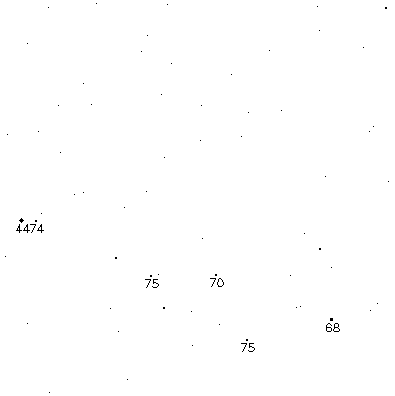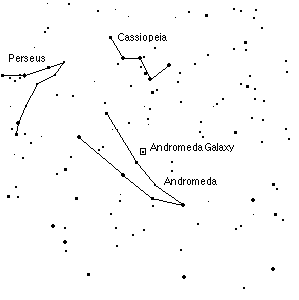
 | |||
|
|
| ||
The Andromeda Galaxy,
M31
Comments Data



A map of the star field. Magnitudes are given without
a decimal point, e.g. 67 is to be interpreted as magnitude 6.7.
How to Find It
An easy object to find, right near one of the stars of the constellation Andromeda.
Whether you are happy or disappointed with M31 through binoculars is a matter of what
you expect. If you expect to see the full extent of the galaxy, including the dust lanes
as shown in photos in books, you'll undoubtedly write it off as a complete loss, just a
fuzzy patch. What you will see is the bright nucleus, which is a distinctive object, and
this is certainly the most easily observed galaxy in the northern-hemisphere sky.
RA=00 43, dec=+41 16
integrated magnitude=3.5

60-degree field of view
(c) Copyright 1998 Benjamin Crowell. All right reserved.
Photos from the Digitized Sky Survey, stdatu.stsci.edu/dss/dss_form.html
Sky maps created by Your Sky, www.fourmilab.com